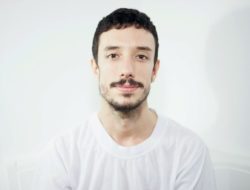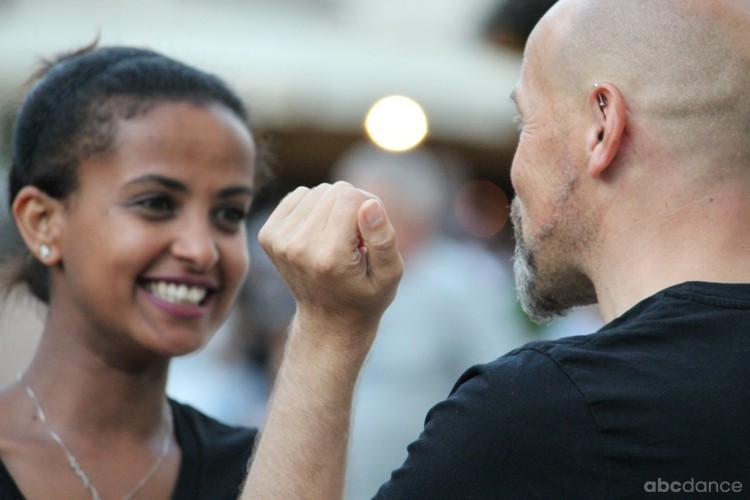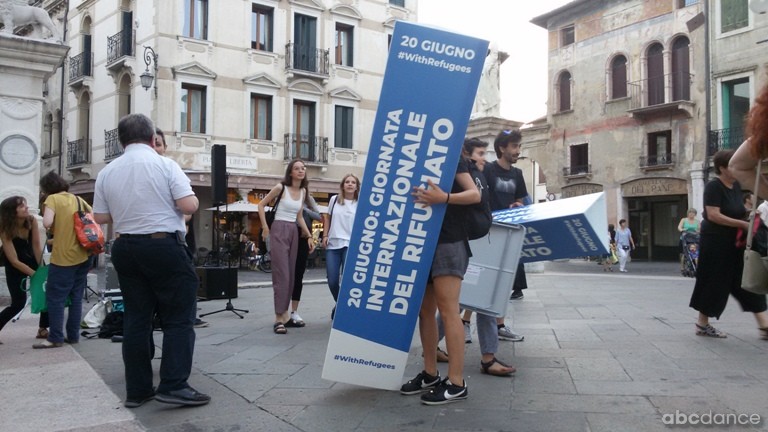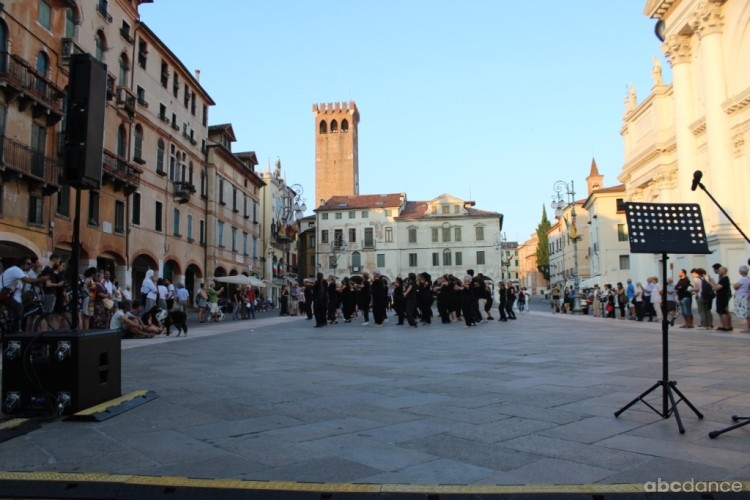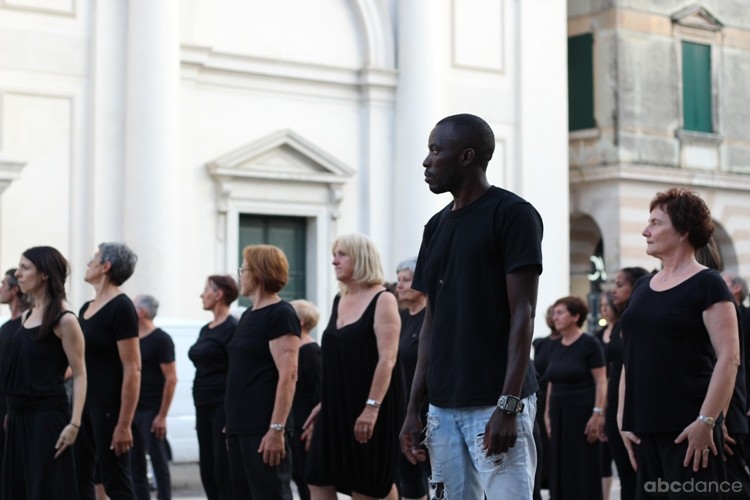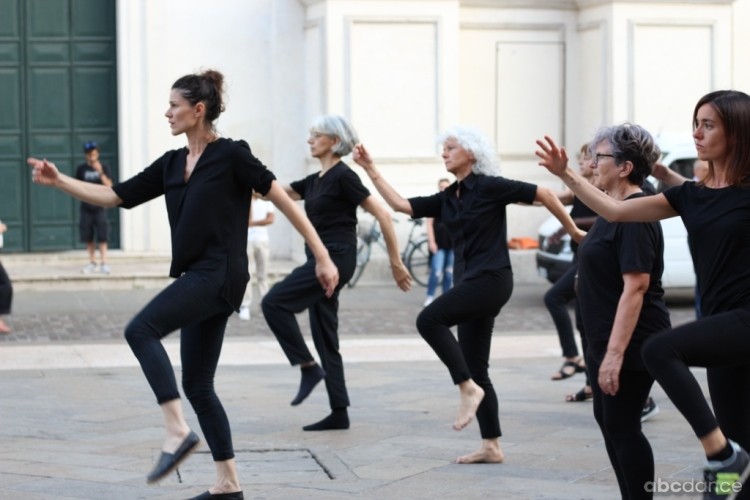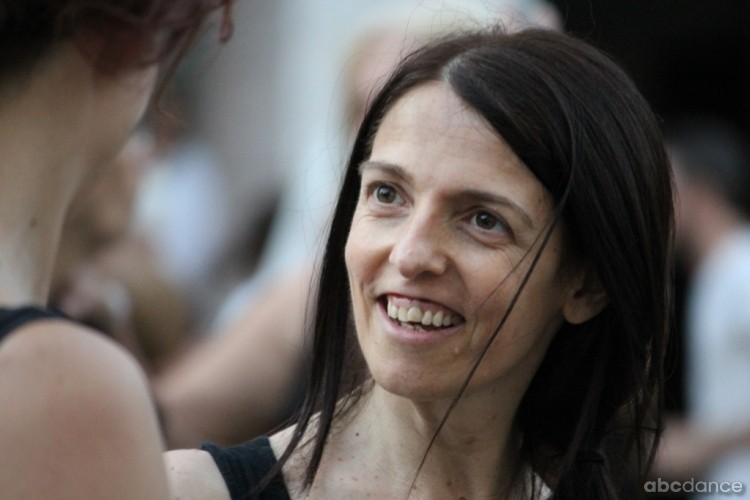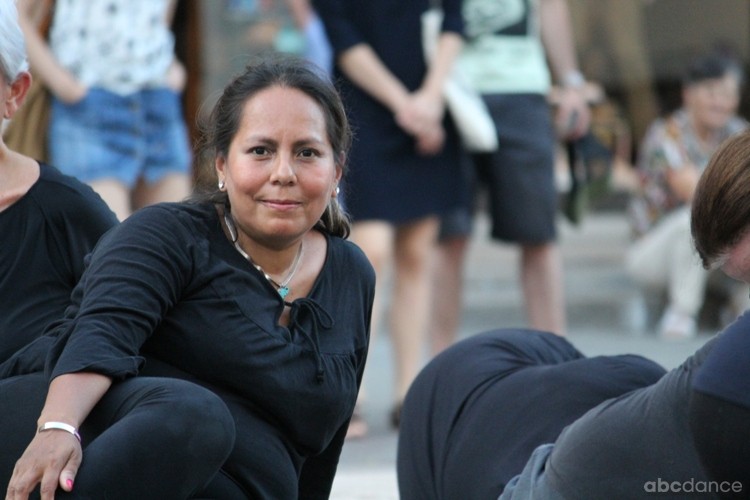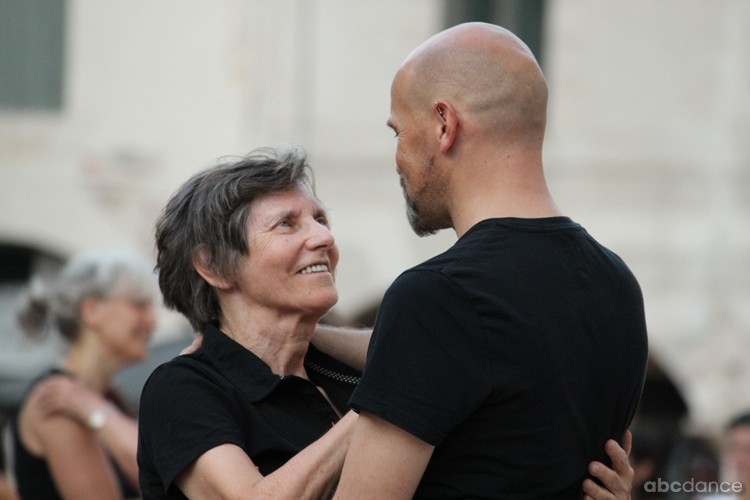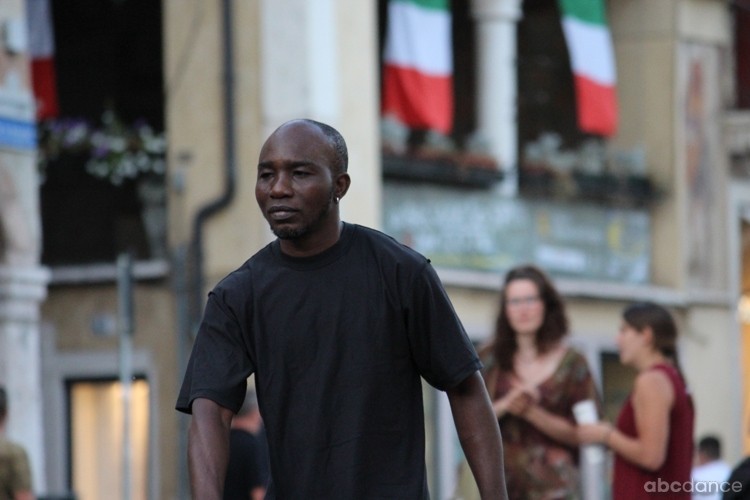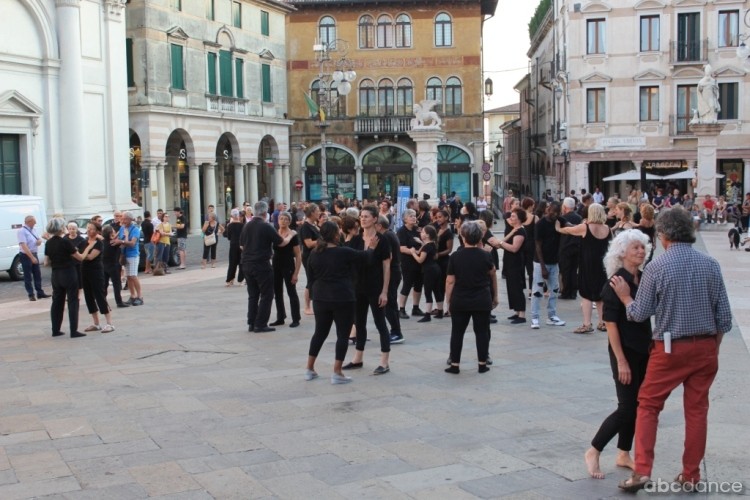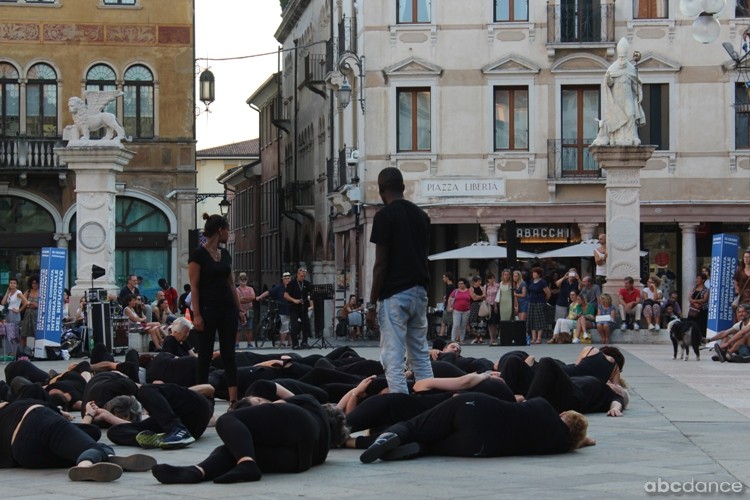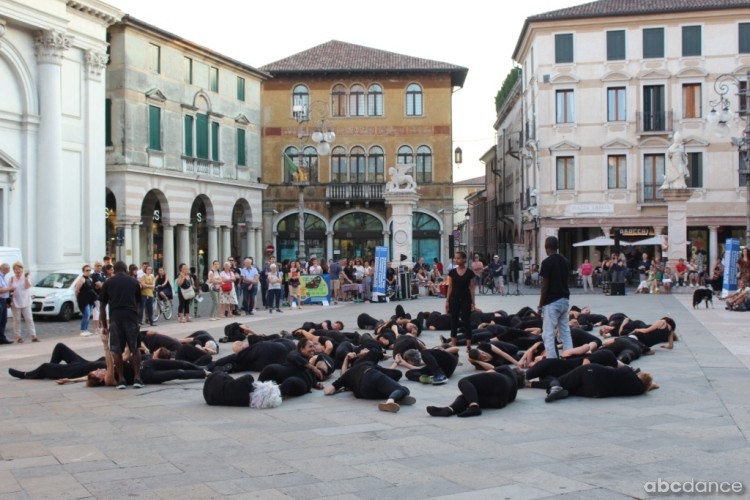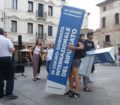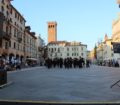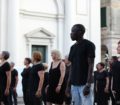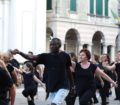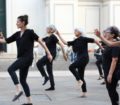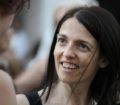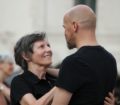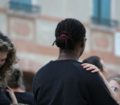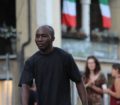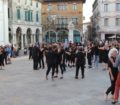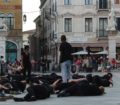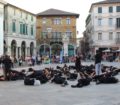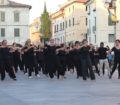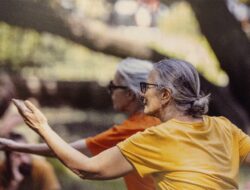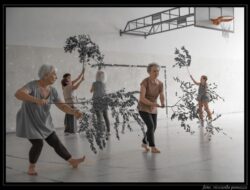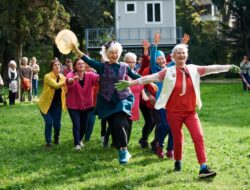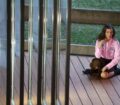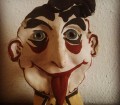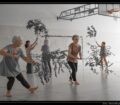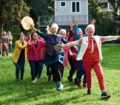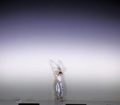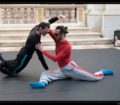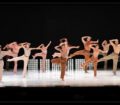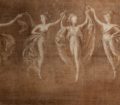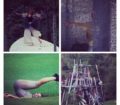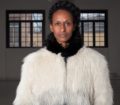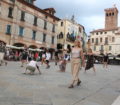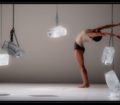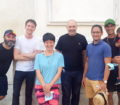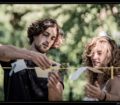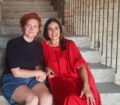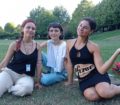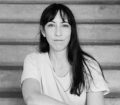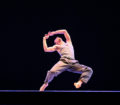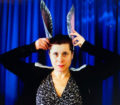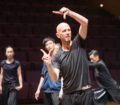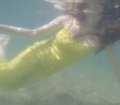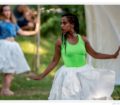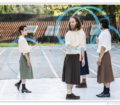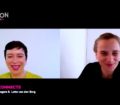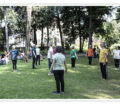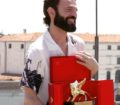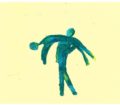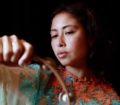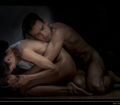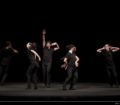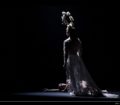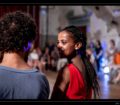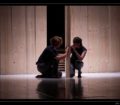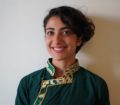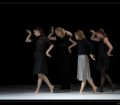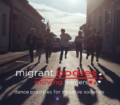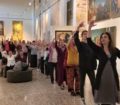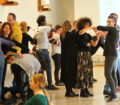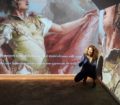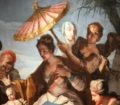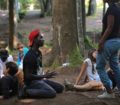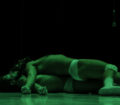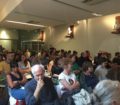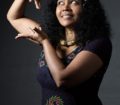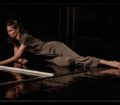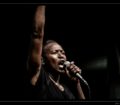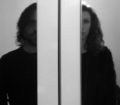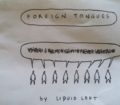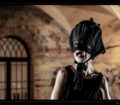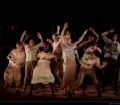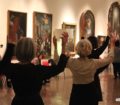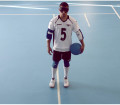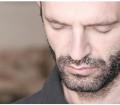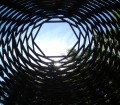World Refugee Day, 20 June, 2018 | Piazza Libertà, Bassano del Grappa (Italy).
IL TESTO IN ITALIANO SEGUE QUELLO INGLESE
The Inclusive Power of Dance | Piazza Libertà is the main square in the town, where the reddish façades of the old Stamperia Remondini (printers) face San Giovanni’s Church, gleaming in resolute whiteness. This piazza, having endured through the indignities of the Second World War, thereafter took the name of freedom. Under its colonnades one may stroll, or liaise with locals whilst quaffing soothing spritzes or dry grappas. Here, this evening, we will dance and disseminate real people’s actual stories, those who have survived war and the tribulations of a geographically and culturally distant Elsewhere.
 The dance splices together the infringed threads of these life stories, a choreographic gathering that unites anyone who might wish to embrace dance, even if only to sway to the hypnotic, repetitive rhythm of a vaguely tribal music, mixed with disco undertones.
The dance splices together the infringed threads of these life stories, a choreographic gathering that unites anyone who might wish to embrace dance, even if only to sway to the hypnotic, repetitive rhythm of a vaguely tribal music, mixed with disco undertones.
“The reason I got out of my country is that there is no peace.” (Philips, Nigeria)
“I’m attached to my country because I was born there. But I don’t agree with how the Chief manages my country. I don’t like war in my country.” (Dioni, Mali)
“My country is beautiful but the government has ruined it.” (Saleh, Syria)
The voices of these testimonies bestrew the choreography, colouring the space with a sparse and prevalent pain, yet never forsaken.
“When people killed my father they wanted to kill me too, they said I was gay. In Liberia, if they say you’re gay, they’ll kill you. I went to a nearby village in Guinea Conakry. When I entered Libya I was jailed for a year. Thrice a day, everyday the police beat us with iron bars. They gave us some water to drink. Sometimes the police came and forced you to have sex with them, then they killed you. I managed to escape shortly after my being imprisoned. I escaped into the water, they put me in a boat and I arrived in Italy.” (L.D., Liberia)
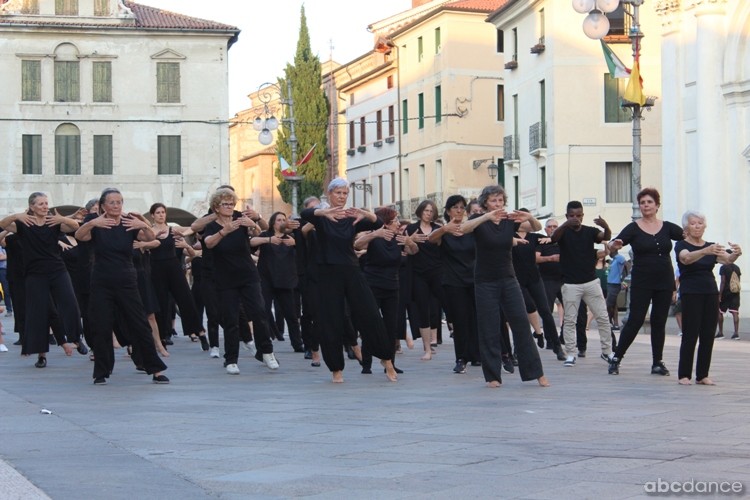 They dance together and they embrace, one hand resting on the heart of the other, to feel it beating, to hear it pound. They dance and gaze into each other’s eyes, with an intensity that knows no bounds. Swaying, dilly-dallying, walking on the spot, all striding together with arms that dart in the direction and rhythm of the next move. There is a motley range of dancers’ faces; adults, children, the elderly, both amateur and professional dancers, both European and African traits. All together, united by dance.
They dance together and they embrace, one hand resting on the heart of the other, to feel it beating, to hear it pound. They dance and gaze into each other’s eyes, with an intensity that knows no bounds. Swaying, dilly-dallying, walking on the spot, all striding together with arms that dart in the direction and rhythm of the next move. There is a motley range of dancers’ faces; adults, children, the elderly, both amateur and professional dancers, both European and African traits. All together, united by dance.
“I lived in Benin City with my parents and four sisters. My father refused to give us the necessities to live because he only wanted to have a son. We had nothing and two of my sisters died after they got sick. […] At that time I met a woman who suggested that I go with her to work in northern Nigeria, in Abuja. She organised trips for groups of girls. I believed her and accepted. But instead of a meeting in Abuja we were taken to Libya, a long three-month trip. We were a month in the desert, without food, without water. When I arrived in Tripoli, I was told to pay the debt for my trip. I had no money and so they forced me to prostitute myself. […] When I escaped, I took refuge in a building under construction, along with the children, and slept there for one night. But I feared that the owners might call the police and so I left. In the streets I saw a lot of people making towards the sea, they wanted to board a boat. I followed them. At that point I decided to embark myself, my choice was either to die in Libya or risk drowning.” (Mariam, Benin)
They dance, all together, they continue to march, along a road that isn’t there, at least not yet. When you dance and you open a chink into the future, you enter Utopia, you cleanse the drama and lift it up on high, with your raised arms. Then you smash it down on the ground, and get up again, all together.
Text and photos by Anna Trevisan
Translation by Jim Sunderland
TESTO ITALIANO
Il poter inclusivo della danza | Piazza Libertà è la piazza principale della città, quella dove si affacciano rossi gli edifici dell’antica Stamperia Remondini mentre la Chiesa di San Giovanni brilla di un costante biancore. Piazza Libertà è quella sopravvissuta alla Seconda guerra mondiale e alla quale deve il proprio nome. Qui si passeggia sotto i portici, qui si chiacchiera sorseggiando amabili spritz o asciutti grappini. Qui, questa sera, si danza e si declamano storie di persone in carne e ossa sopravvissute alla guerra e alle avversità di un Altrove geograficamente e culturalmente lontano.
 La danza annoda i fili spezzati di queste storie di vita, riunendo in un solo grande corpo coreutico tutte le persone che accettano di danzare, di dondolare al ritmo ipnotico e ripetitivo di una musica vagamente tribale miscelata ad un sound disco.
La danza annoda i fili spezzati di queste storie di vita, riunendo in un solo grande corpo coreutico tutte le persone che accettano di danzare, di dondolare al ritmo ipnotico e ripetitivo di una musica vagamente tribale miscelata ad un sound disco.
“Il motivo per cui sono uscito dal mio Paese è che non c’è pace.” (Philips, Nigeria)
“Mi piace il mio Paese perché sono nato lì. Non mi piace come il Capo gestisce il mio Paese. Non mi piace la guerra nel mio Paese.” (Dioni, Mali)
“Il mio Paese è bello ma il governo l’ha rovinato.” (Saleh, Siria)
La voce delle testimonianze interrompe i passi e la coreografia, colorando lo spazio di un dolore sparso e attuale eppure mai arreso.
“Quando le persone hanno ucciso mio padre volevano uccidere anche me, dicevano che ero gay. In Liberia, se dicono che sei gay, ti uccidono. Sono andato in un villaggio vicino in Guinea Conakry. Quanto sono entrato in Libia sono stato incarcerato per un anno. Tutti i giorni la polizia ci picchiava con spranghe di ferro per tre volte al giorno. Ci davano un po’ d’acqua da bere. Alcune volte, la polizia veniva e ti obbligava ad avere rapporti sessuali con loro, poi ti uccidevano. Io sono riuscito a scappare poco dopo che arrivasse il mio momento. Sono scappato verso l’acqua, mi hanno messo in una barca e sono arrivato in Italia.” (L.D., Liberia)
 Si danza, e ci si abbraccia con una mano posata sul cuore dell’altro, per sentirne il battito, per sentirne il rumore. Si danza e ci si guarda negli occhi, con un’intensità che non conosce confini. Si ondeggia, si oscilla, si cammina sul posto con sgambate all’unisono e braccia che sfrecciano la direzione e ritmano il passo. I volti dei danzatori sono eterogenei: adulti, bambini, anziani, danzatori amatoriali e professionisti, tratti caucasici e tratti afro. Tutti insieme, uniti dalla danza.
Si danza, e ci si abbraccia con una mano posata sul cuore dell’altro, per sentirne il battito, per sentirne il rumore. Si danza e ci si guarda negli occhi, con un’intensità che non conosce confini. Si ondeggia, si oscilla, si cammina sul posto con sgambate all’unisono e braccia che sfrecciano la direzione e ritmano il passo. I volti dei danzatori sono eterogenei: adulti, bambini, anziani, danzatori amatoriali e professionisti, tratti caucasici e tratti afro. Tutti insieme, uniti dalla danza.
“Vivevo a Benin City con i miei genitori e le mie 4 sorelle. Mio padre si rifiutava di darci il necessario per vivere perché desiderava solo avere un figlio maschio. Non avevamo nulla e due delle mie sorelle dopo essersi ammalate sono morte. […] A quell’epoca ho conosciuto una donna che mi ha proposto di portarmi a lavorare nel nord della Nigeria, ad Abuja. Lei organizzava i viaggi per gruppi di ragazze, le ho creduto ed ho accettato. Invece di ritrovarci ad Abuja siamo state portate in Libia con un lungo viaggio 3 mesi. Siamo stati un mese nel deserto, senza cibo, senza acqua. Quando sono arrivata a Tripoli mi è stato chiesto di pagare il debito del mio viaggio. Non avevo denaro e così mi hanno obbligato a prostituirmi. […] Quando sono scappata mi sono rifugiata in un edificio in costruzione coi bambini, ho dormito lì una notte. Poi temevo che i proprietari chiamassero la polizia e me ne sono andata. Nelle strade c’era molta gente che correva verso il mare, volevano imbarcarsi. Li ho seguiti. A quel punto ho deciso di imbarcarmi anch’io, la mia scelta era tra morire in Libia e rischiare di annegare.” (Mariam, Benin)
Si danza, tutti insieme, si continua a marciare, lungo una strada che non c’è, non ancora. Si danza e si apre un varco nel futuro, si fa ingresso nell’utopia, si deterge il dramma e lo si solleva in alto, con le braccia, e poi lo si schiaccia giù, a terra, e ci si rialza, tutti insieme.
Servizio e foto di Anna Trevisan
Tags: #communitydance, #DanceWell, #danzadicomunità, #migrantbodies, #WithRefugees, Dance Well, Migrant Bodies

